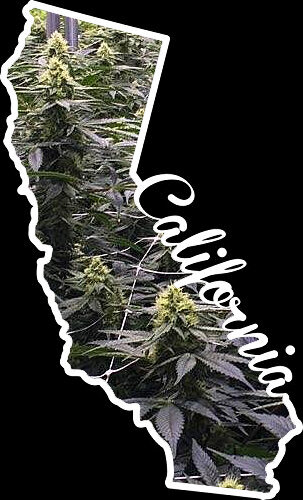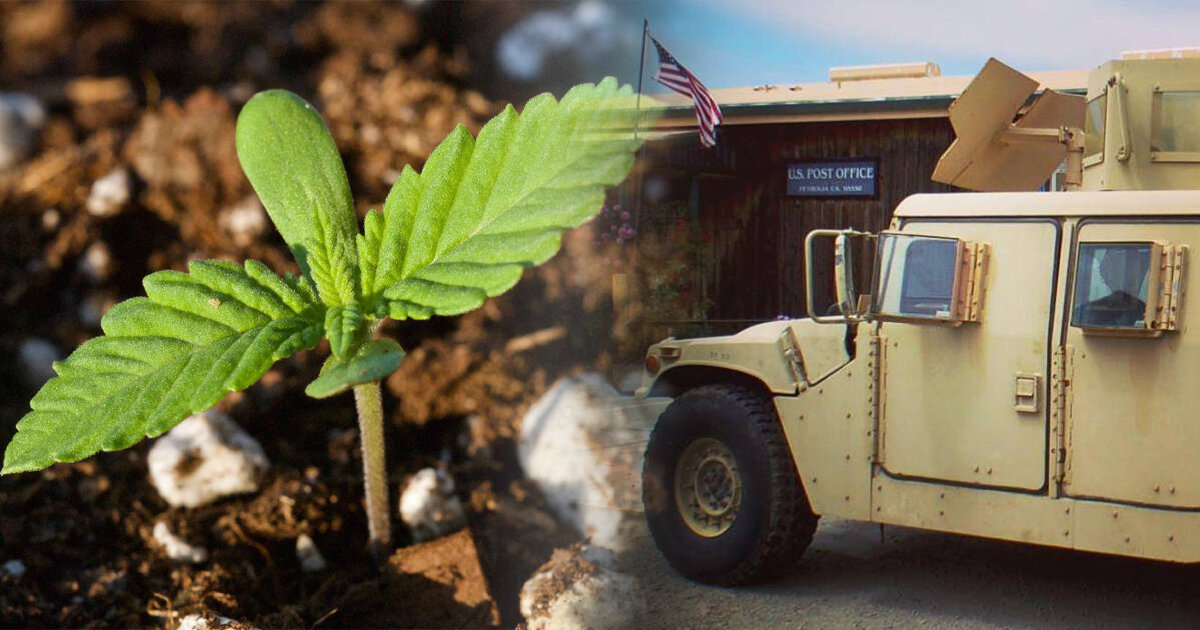
The regulated cannabis market in California is looking to rebound after an overall dismal year for sales revenues in 2018 that totaled just $2.5 billion as the implications of Prop 64 became reality and, as a result, the market contracted. For context, in 2017 the state pulled in roughly $3.0 billion, so 2018 was a drop in revenue, and this year’s numbers are expected to meet or even slightly exceed that 2017 level.
Meanwhile, the unregulated market continues to thrive and is estimated to be on the verge of an $8.0+ billion haul for 2019 as fewer than 1 in 5 cannabis consumers in Cali currently turn to a legal, licensed dispensary to re-up their stash. There are many reasons why so many heads hesitate to patronize the regulated market but for most the number one reason is price.
The sad part is, even setting the (ridiculously high) taxes aside, the high retail price tag on an eighth of dispensary weed is a result of a lengthy, overregulated supply chain and almost nobody – especially the growers – is netting very much of that sticker price as it gets chopped up along the way to the shelf.
SHOW ME THE MONEY
So as consumers rightfully demand lower prices on legal weed, the majority of the licensees bringing that weed from seed to sale are barely treading water financially and cannot conceive of a way to drive their tiered prices any lower without going under. Two proven solutions to this problem would be to slash the tax obligations currently bogging down the entire industry, and also to greatly reduce the cost of entry to get into the industry.
Both of those sensible ideas, however, would require an awakening from the suits in Sacramento that we do not feel is coming anytime soon. So in the meantime, the market pricing on regulated cannabis will remain in flux with distribution and wholesale prices on outdoor and greenhouse flower currently peaking higher than they have in the past couple of years.

Inevitably, the pricepoint on cannabis flower – particularly outdoor and greenhouse – is going to plummet as massive-scale farms in places like Cali’s central coast and high desert regions get dialed in. While a well-run cultivation operation can potentially produce a pound of pot for around $500 in cost of production, a stated goal of large-scale growers is to drop that cost to just $100/lb by the year 2025 as operating procedures continue to be optimized.

Colorado legalized the adult recreational use of cannabis back in 2014 and since then, the average retail price for an ounce of cannabis flower from the legal market has been cut in half – from roughly $200/oz to under $100/oz. Comparing Cali to Colorado is pretty much apples to oranges, but still, there is no reason to believe that California will not follow a similar trend as its own market stabilizes – it is basic economics.
As prices in the legal market drop to reasonable levels, in theory, more consumers will begin to take advantage of the convenience that a well-lit dispensary or prompt delivery service can provide. This will force the street market to adjust its pricing to remain competitive but all of this is years from now, in our opinion. For now, cannabis prices in both the regulated and unregulated markets in California will continue to rise.
RISK IS TOO DAMN HIGH
There is a saying in the weed world that “Buyers Don’t Set Prices”, and that is a direct shot at those who pine for lower pricing. Similarly, as much as it would like to, the regulated market doesn’t set prices either as it is harshly learning as the majority of consumers refuse to pay more than $50/8th out the door, since that’s what their neighborhood plug will do for them.
So since the streets set the retail prices, they certainly influence the wholesale prices and a heavy increase in law enforcement action against unpermitted grows this year is sure to impact the overall yield of such grows. Demand will remain as high as ever, but supply will be lower than expected due to ongoing raids, so prices will go up and that’s what we are seeing since Croptober.
As we reported in last week’s Friday Sesh Newsletter (sign up HERE):
CAMP, or the Campaign Against Marijuana Planting, was a multiagency law enforcement effort / terrorism tactic concocted in the early 1980’s with a mission statement to totally eradicate all illegal cannabis cultivation in the state of California. Longtime Northern California residents in the infamous “Emerald Triangle” remember military-style raids on remote, mountain gardens which led to an entire generation growing up with those horror stories being a lived reality.
So, naturally, now that weed is “legal” in California, the governor allocated over $200,000,000 of “legal” weed revenue to restart another eradication program and since he appears to be pretty tone-deaf, he allowed them to call it CAMP all over again. Now nearly 40 years since its first iteration, growers up and down the state were greeted this year by Blackhawk helicopters and Call of Duty-geared National Guard troops tearing through properties week after week uprooting every unpermitted plant they could find. This week, California Attorney General Xavier Becerra broke down the numbers from CAMP actions so far in 2019.
So far, 148 arrests have been made at 345 separate raided grow sites where 953,459 plants were destroyed.
Attorney Gen. Becerra says, “Illegal cannabis grows are devastating our communities. Criminals who disregard life, poison our waters, damage our public lands, and weaponize the illegal cannabis black market will be brought to justice.”
Meanwhile, social equity programs are caving in on themselves (if they exist at all), application and permit fees to get legal are still astronomically high and dependent on potentially staunchly anti-cannabis local officials for approval, and tax rates are through the roof for both the supply and the demand sides of the cannabis curve. Colorado is using cannabis profits to provide food and housing to the homeless, Cali is using them to crack down harder on the plant at the root of it all.

As a part of that ongoing crackdown, somewhere around 470 residents of Humboldt County received warning letters late last week from the Commercial Cannabis Cultivation unit at Code Enforcement letting them know that authorities have targeted their properties for potential enforcement action due to unpermitted cannabis cultivation. The majority of these farmers are generational mom & pop growers who form the fabric of the Emerald Triangle but they now have two options:
-
Get legal
-
Quit growing
Of course, the permitting fee runs anywhere from $20,000 – $40,000, effectively weeding out most locals and leaving many wondering how much risk they are willing to take. Old school weed farmers are no strangers to guerilla tactics though, so next year’s “light dep” might be some partial-shade pot that somebody had the guts to grow.
For the rest that can successfully get to harvest, in either market, wholesale prices should remain on the high end for a while.
FIRE WEED
It seems like an annual event nowadays, California ablaze each fall. Raging wildfires wreaked havoc on both the regulated and street weed markets in 2018 and this year’s horrific fires came with the added BS from PG&E, the monopolized regional energy company, which decided to preemptively shut off the power to hundreds of thousands of homes for days on end rather than risk having their outdated powerlines be to blame for any of the damage being done.
So not only did some cannabis crops get blanketed with ash and soot from nearby blazes, but countless indoor operations may have been spoiled when irrigation or lighting timers dependent on electricity failed to function during a mandatory blackout. There is no doubt that some growers were prepared and had backup power on deck, but surely many were not and every plant lost drives down the supply of a product in demand – so prices rise.
From the weather to the never-ending flow of noobs flooding into the industry and into the consumer market, there are many other reasons why we think that wholesale prices for cannabis will continue trending upward well into 2020. Is this a good thing? Well, that probably depends on who you ask.
Growers making more money is a good thing.
But what if it comes with higher risk as well?
Consumers are already shunning dispensaries due to high retail prices, so those can’t really go higher to make up for the higher wholesale prices, which is cool but it could cut into the margins of the dispensaries.
$100 wholesale pounds sound like a surefire way to keep any discerning cannabis consumer far, far away from any regulated outlet.
Lower the taxes at all links along the supply chain and lower the costly barriers of entry that currently keep so many legacy operators from entering the industry and maybe, just maybe, Cali can begin to live up to its potential as the largest legal cannabis marketplace on the planet.
Keep updated on all the latest news and updates in the Cannabis industry here at Beard Bros Pharms by signing for our Friday Sesh Newsletter here. Always Dank and Never Spam!
















